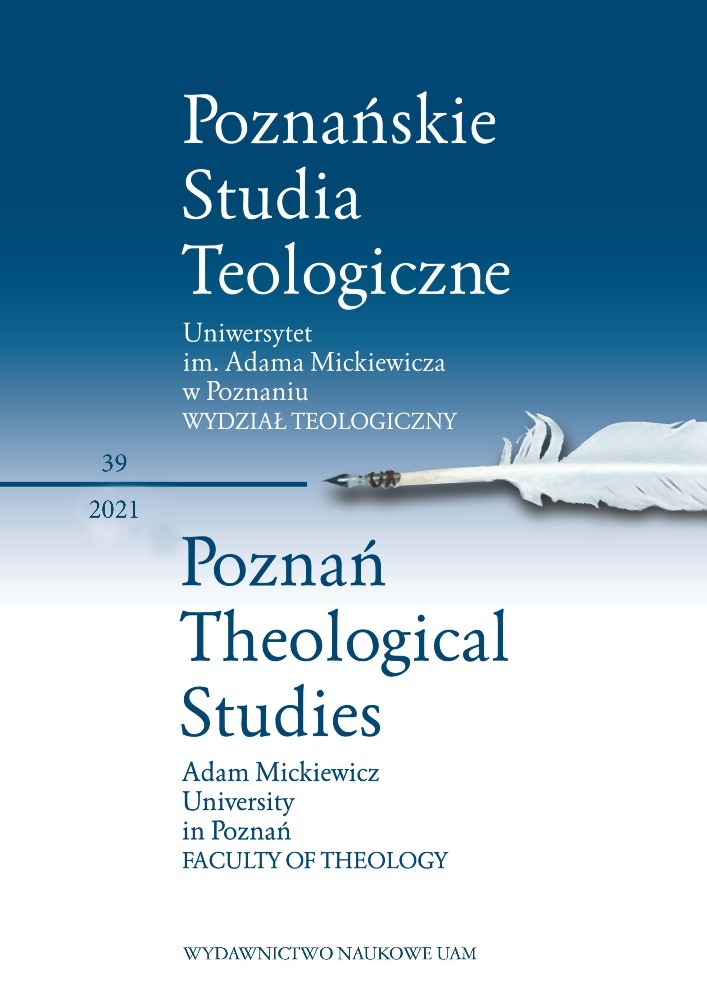Abstract
Sometimes it is said about the fall of the Christian Culture of the West. It is worth taking a look, therefore, at a certain analogy from seven centuries ago. The first thousand years of development of faith in Asia led to many outstanding theological syntheses. There were also many saint martyrs and missionaries. Christianity also had its experience of faith in the Islamic State. Despite the difficulties, the missionary spirit until the fourteenth century has been developing. The breakthrough occurred only during Timur’s times due to Mongolian wars. Why did Timur accept Islam, despite the considerable presence of Christians in his surroundings? There was no lack of outstanding Christian scholars. In addition to possible personal reasons, he probably decided realizing that Sufi Islam is already deeply rooted among the masses of a simple population of Central Asia. An important role in this process played the political current of “Order” Naqshbandiyah.
References
Akiner S., Islam in Central Asia, w: Encyclopedia of Religion, t. VII, Detroit 2005, s. 4620-4630.
Al-Buchari S., Zbiór wiarygodnych hadisów Proroka Muhammada, tłum. P. Ziółkowski, Poznań 2018.
Atiya A.S., Historia Kościołów Wschodnich, Warszawa 1978.
Brill Olcott M., Sufism in Central Asia. A Force for Moderation or a Cause of Politicization?, „Carnegie Papers” 84 (2007) (Carnegie Endowment for International Peace – Russian and Earasian Program).
Can M., Emergence of Islamic Sciences in Merv (First Two Centuries A.H.), „Mütefekkir” 3 (2016) nr 6, s. 399-425.
Cieciura W., Muzułmanie chińscy. Historia, religia, tożsamość, Warszawa 2014.
Comneno M.A.L., Nestorianism in Central Asia during the First Millennium: Archaeological Evidence, „Journal of the Assyrian Academic Society” 11 (1997), s. 20-53.
Daniélou J., Teologia judeochrześcijańska. Historia doktryn chrześcijańskich przed Soborem Nicejskim, tłum. S. Basista, Kraków 2002.
Deeg M., Chinese Buddhists in Search of Authenticity in the Dharma, „The Eastern Buddhist” 45 (2014) nr 1-2, s. 11-22.
Dillon M., Islam in China, w: Encyclopedia of Religion, t. VII, Detroit 2005, s. 4630-4640.
Dziekan M.M., Pisarze muzułmańscy VII-XX w. Mały słownik, Warszawa 2003.
Francavilla C., The site of Shaym Qalʿa, Marw oasis: reconsi dering the chain of information, „Historia i Świat” 8 (2019), s. 79-90.
Gafurow B., Dzieje i kultura ludów Azji Centralnej. Prehistoria. Starożytność. Średniowiecze, tłum. S. Michalski, Warszawa 1978.
Gumiłow L., Śladami cywilizacji Wielkiego Stepu, tłum. S. Michalski, Warszawa 2004.
Hartmann J.-U., Buddhism in Central Asia, w: Encyclopedia of Religion, t. II, Detroit 2005, s. 1144-1148.
Hoogerwerf C., Historische versus allegorische uitleg in de inleiding van Išoʻdad van Mervs commentaar op de Psalmen: Vertaling en bronkritische analyse, „NTT Journal for Theology and the Study of Religion” 73 (2019) nr 4, s. 283-297.
Hopkirk P., Obce diabły na Jedwabnym Szlaku. W poszukiwaniu zaginionych miast i skarbów w chińskiej części Azji Środkowej, tłum. A. Bezpiańska-Oglęcka, Warszawa 2008.
Hunter E. C.D., Syriac Christianity in Central Asia, „Zeitschrift für Religions- und Geistesgeschichte” 44 (1992) s. 362-368.
Hunter E. C.D., The Conversion of the Kerait to Christianity in A.D. 1009, „Zentralasiatische Studien” 22 (1989), s. 142-163.
Jan Paweł II, Dinka IV, Wspólna deklaracja chrystologiczna Kościoła katolickiego i Asyryjskiego Kościoła Wschodu, „Studia Theologica Varsaviensia” (1997) nr 2, s. 349--351. Tekst oryginalny https://www.vatican.va/content/john-paul-ii/en/speeches/1994/november/documents/hf_jp-ii_spe_19941111_dichiarazione-cristologica.html [dostęp 04.08.2021].
Jenkins Ph., The Lost History of Christianity. The Thousand–Year Golden Age of the Church in the Middle East, Africa, and Asia – and How It Died, New York 2008.
Jessa P., „Przyjaciele Allaha”. Kult muzułmańskich świętych w Azji Środkowej, Poznań 2009.
Klimkeit H.-J., Buddhism in Turkish Central Asia, „Numen” 37 (1990), s. 53-69.
Kluj W., Chrześcijaństwo w starożytności i średniowieczu na terytoriach współczesnego Turkmenistanu, w: Turkmenistan. Historia – społeczeństwo – polityka, red. T. Bodio, Warszawa 2005, s. 479-485.
Kluj W., Zmienne dzieje Kościoła w Azji Środkowej, w: „Ecclesia in Asia”. Wybrane problemy Kościoła w Azji w świetle posynodalnej adhortacji Jana Pawła II, red. J. Różański, Warszawa 2004, s. 143-159.
Landowski Z., Sufizm. Podstawowe informacje, Warszawa 2010.
Latourette K.S., A History of the Expansion of Christianity, t. II: The Thousand years of Uncertainty, A.D.500-A.D.1500, Grand Rapids 1973.
Maciak M., Muzułmańskie pielgrzymowanie w krajach Azji Centralnej (rozprawa doktorska), Warszawa 2018.
McDonough S., A Second Constantine? The Sasanian King Yazdgard in Christian History and Historiography, „Journal of Late Antiquity” 1 (2008) nr 1, s. 127-140.
Muslim Saints and Mystics. Episodes from the Memorial of the Saints by Farid al-Din Attar, Ames 2000.
Nattier J., Church Language and Vernacular Language in Central Asian Buddhism, „Numen” 37 (1990), s. 195-219.
Nautin P., L’auteur de la «Chronique anonyme de Guidi»: Élie de Merw, „Revue de l’histoire des religions” 199 (1982) nr 3, s. 303-314.
Panchenko C.A., Orthodoxy and Islam in the Middle East. The Seventh to the Sixteenth Century, Jordanville 2021.
Philip T.V., The Missionary Impulse in the Early Asian Christian Traditions, „Journal of International Review of Mission” 85 (1996), s. 508-509.
Sadowski M., „Trzecie płuco” chrześcijaństwa? Jan Paweł II a Kościoły tradycji syryjskiej, „Studia Włocławskie” 16 (2014), s. 245-261.
Sander L., Buddhist Literature in Central Asia, w: Encyclopaedia of Buddhism, red. G.P. Malalasekera, t. IV, Colombo 1979, s. 52-75.
The Commentaries of Ishoʿdad of Merv, Bishop of Ḥadatta (c. 850 A.D.) in Syriac and English, red. M.D. Gibson, t. I-V, Cambridge 1911-1916.
Uciecha A., Adam i Ewa we wschodnio-syryjskiej egzegezie Iszodada z Merw (Rdz 2,21-24): stan badań, komentarz i przekład, „Śląskie Studia Historyczno-Teologiczne” (2016) z. 2, s. 302-310.
Uciecha A., Egzegeza biblijna w komentarzach syryjskich Afrahata, Efrema, Iszodada z Merw i Teodora Bar Koni: zarys problematyki, „Vox Patrum” 67 (2017), s. 673-686.
Utz D.A., A Survey of Buddhist Sogdian Studies, Tokyo 1978.
Wood Ph., The Chronicle of Seert: Christian Historical Imagination in Late Antique Iraq, Oxford 2013.
Yakubovskii A.Yu, Bosworth C.E., Marw al-Shahidjan, w: Encyclopédie de l’Islam, t. VI, Leiden–Paris 1991, s. 603-606.
Żerańska-Kominek S., Lebeuf A., Opowieść o szalonej Harman i Aszyku zakochanym w księżycu. Postać muzyka i koncepcja muzyki w turkmeńskim dessanie „Harman Däli”, Kraków 1998.
License
Copyright (c) 2021 Wojciech Kluj

This work is licensed under a Creative Commons Attribution-NonCommercial-NoDerivatives 4.0 International License.

